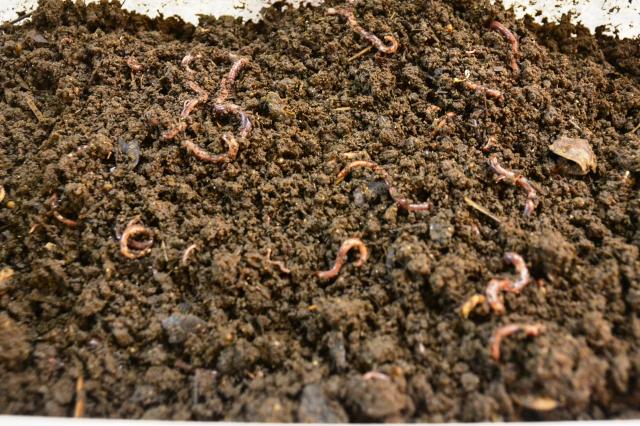Study published by Nature assesses relationship between glyphosate metabolite and worm communities in the soil
Study published by Nature assesses relationship between glyphosate metabolite and worm communities in the soil
A study conducted in Brazil and published by Nature/Scientific Reports assessed the presence of glyphosate metabolites in the soil and their impact on earthworm communities, which are important bioindicators of soil quality. The fruit of postdoctoral research, the aim of the work was to evaluate whether aminomethylphosphonic acid (AMPA), one of glyphosate's main metabolites, had an impact on the worms. "Glyphosate is the world's most used herbicide and it is known for its easy degradation", explains the researcher George Brown, from Embrapa Forestry. "Nevetheless, we need to learn more about residual effects on the soil, and especially the impact of AMPA, which is a byproduct of the degradation of glyphosate", he adds.
Previous studies have shown a very large variation in the quantity of earthworms in soils under no-till farming, an agricultural practice aimed at conserving soils. The question was: if no-till farming is a practice that helps soil conservation and increases earthworm populations, why are there so few worms in some croplands? Could there be a factor associated with no-till management, like the use of an agrochemical that is harmful to the worms? According to Brown, "another issue is that in the literature, there are studies that confirm the toxic effect of glyphosate on worms, and other studies where there was not any effect on such organisms. In other words, there is a debate to be settled".
The study published by Nature/Scientific Reports conducted several essays, which analyzed worm behavior and reproduction patterns on different AMPA dosages, in standardized soils. The research was based on the Eisenia andrei species, which is the ISO standard for ecotoxicologial tests. The literature review stage found research results from a study in Argentina that detected AMPA residue in several cropland soils. Such study showed quantities of up to one thousand parts per million (mg/kg) in the soil, figures that are considered to be very high. Professor Cíntia Mara Ribas de Oliveira, from Universidade Positivo, who also participated in the study, stresses the persistence of AMPA in the soil: "according to the literature, while glyphosate's half life lasts 5 to 23 days, AMPA's is 151 days, with variations from 76 to 240 days, as it depends on temperature, soil type, microbial activity conditions, among other factors. In other words, AMPA remains in the soil for quite some time after glyphosate is applied and that can have an impact on soil biota."
"So, what is happening to the earthworms at this dosage?", ponders Anahí Dominguez, from Universidad Nacional de Río Cuarto, Argentina, who worked on the study in Brazil as part of her postdoctoral studies, with the support of researchers from Embrapa Forestry, Embrapa Cerrados and the professors of Universidade Positivo's Graduate Program in Environmental Management. " AMPA did not affect eathworm mortality, even at the highest dose used (2,500 ppm). However, AMPA affected worm reproduction and development, resulting in a higher production of cocoons in the long run (higher investiment in reproduction); but, at the highest dose, both the cocoons and young newly-hatched specimens were smaller. Without any AMPA, reproduction was smaller, but cocoons and young individuals were larger", Anahí explains.
The next steps would be to follow the growth of earthworms in contaminated soils further to check on how they develop and their new generations. "There is a series of developments that can be unfolded," Brown assesses, "which gives a lot of room for research: will the next generation grow weaker? What is their reproductive potential? What is the long-term effect on those populations? Are we contaminating the soil with AMPA and preventing earthworms from developing the way they should and performing their benefitial role?", he ponders.
The intention is to also carry out tests in natural soils, and research the impact of AMPA in environmental conditions in soils with different levels of contamination. "In addition, studies to search solutions for the issue have been initiated, such as, for instance, the use of biochar to mitigate the ecotoxicological effects of AMPA on contaminated soils", asserts Cíntia Oliveira.
Scientific Reports is the only free access publication of the Nature Publishing Group.
Translation: Mariana de Lima Medeiros
Katia Pichelli (MTb 3594/PR)
Embrapa Forestry
Press inquiries
florestas.imprensa@embrapa.br
Phone number: (41) 3675-5638
Further information on the topic
Citizen Attention Service (SAC)
www.embrapa.br/contact-us/sac/

